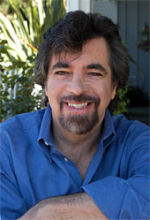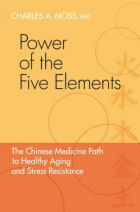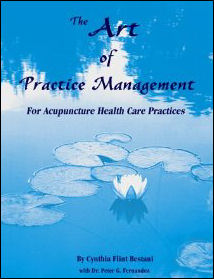Acupuncture & TCM Articles

Neil R. Gumenick is the founder and Director of The Institute of Classical Five-Element Acupuncture. Neil is a Worsley certified advanced teacher of Classical Five-Element Acupuncture and a practitioner with over 27 years of private practice experience. Neil holds three degrees from the College of Traditional Acupuncture (U.K.), and he participated for 10 years in the Master Apprentice Programô, led by Profs. J.R. & J.B. Worsley. Neil has taught at the USC and UCLA Schools of Medicine, the Worsley Institute of Classical Acupuncture, the Traditional Acupuncture Foundation, California Acupuncture College, Santa Barbara College of Oriental Medicine, and Pacific College of Oriental Medicine. He has been a Professor at Emperor's College of Traditional Oriental Medicine and SAMRA University of Oriental Medicine. Neil is co-author of The Art of Practice Management for Acupuncture Health Care Practices
Practitioner/Patient Rapport Part One
By Neil Gumenick, MAc (UK), LAc, Dipl. Ac
We all live inside a behavioral comfort zone from which we interact with others. To truly gain rapport with the variety of patients who seek our aid, we must be willing to expand what is comfortable for us in order to make unity with any patient.
Most of us have tasted the experience of rapport - moments when we felt completely seen and understood. We felt safe enough to withhold nothing, to completely and freely be ourselves. To practice our medicine at its deepest levels, we must create such moments with every patient. We don't have the luxury of months or years to get to know a patient. We must be able to develop that kind of trust within minutes.
Gaining rapport is different with each patient. We communicate not only with what we say, but how we say it: with emotions; tone of voice; facial expressions; body language; touch; physical closeness or distance. Everyone has an underlying elemental imbalance that cries out for help in virtually everything we say and do. This imbalance, which we call the causative factor, organizes life around its agenda. It presents a recurring theme that manifests imbalanced and inappropriate behavior. To sense what is inappropriate and respond to the call, we must be internally quiet enough to listen. We must leave our personal process and our needs outside the treatment room.
 
How do you know when you're in rapport? While there are no absolutes, here are some things to look for:
- The patient's face and body will relax and soften.
- There will be a profound sense of things being "all right" between the two of you.
- You will be neither too intrusive nor too distant.
- You will fill completely at ease, with no internal chatter, no striving or wondering what to say.
- You will empathize completely and be empty enough of yourself to follow the patient's lead into any area he or she may take you.
Not every patient is like you. You may be warm and cuddly, but if that is all you bring to the treatment table, you are likely to have a practice limited to people much like yourself. What about the patients who are hostile; depressed; anxious; needy; and afraid? Are they any less deserving of care? No, because in essence, we are all equal. Their emotional expression is as much (or more) a part of their imbalance as their migraine, back ache, damp heat, etc. If their demeanor puts us off, it only means we have not integrated and accepted that part of ourselves. It is a growth opportunity for us to embrace.
Using the five elements as an example, let us examine the kinds of energy we must be able to muster from within to give a patient what he or she truly needs. The problem is due to our own imbalances. Like our patients, we tend to suppress certain emotions and overexpress others. Our culture has also conditioned our acceptance or rejection of certain emotions. Therefore, many of us are comfortable with joy and sympathy (the emotions of fire and earth) and are uncomfortable with anger, grief and fear (the emotions of wood, metal and water). A healthy human being will manifest all of the emotions in an appropriate set of circumstances. Our work is to awaken all five elements in ourselves so that we can resonate and be moved in any direction; respond accurately; and achieve rapport with anyone.
Let's consider one of the elements and some of the challenges/opportunities it can present. Wood is the power of springtime, a time of birth and regeneration, boldly and forcefully surging out of the winter stillness. Wood carries a sense of optimism: the hopes and visions of a future waiting to be realized. Out of the nature of wood arise its officials: the Official of Planning (liver) and the Official of Decision-Making and Judgement (gall bladder), and its corresponding emotion (anger).
At times, we all need the power to express ourselves forcefully and dynamically. We need to have vision, purpose and plans. Nothing can begin without these qualities the liver brings. Similarly, deciding what to do first, when and how proceed is the essence of the gall bladder's job. When these officials dysfunction, frustration and anger result. Behaviorally, there may be such meticulous overplanning and decision-making that nothing ever gets started or, in the other extreme, internal chaos with no order at all. In either case, new growth feels thwarted and stifled. To someone with a wood imbalance, this internal sense of frustration becomes a life theme. Whether the anger is expressed or suppressed, the dynamic is the same. Remember that the patient's anger is a symptom of disease, not who the patient really is. Do not take the anger personally any more than you would take tendonitis personally. Do not be intimidated by it. Acknowledge it. Face it directly: "You seem angry. Tell me about it." Invite the patient to express freely.
To be in rapport with such patients may require you to bring the utmost in professionalism, confidence, orderliness and authority, with precise, no-nonsense explanations and firm, assertive guidance. In nature, wood's movement is not random, but planned, organized and precisely coordinated, as in the growth of a seedling into a tree. Therefore, wood imbalances often need support in exactly these areas, and may be greatly relieved that, at last, someone has taken charge. Be vigilantly on time with such patients; impeccable with scheduling; and precise with your delivery of treatment. All patients need appropriate homework between treatments (diet, exercise, rest, recreation, etc.). This kind of patient often needs it delivered with strict accountability. Wood needs structure, boundaries and purpose. Explain why an assignment is important. Make a clear agreement about what the assignment is and the consequences of not doing it (such as not treating the patient until he or she is willing to do his or her part). Make sure the patient can realistically accomplish the assignment. Be flexible, and allow the patient to contact you if he or she needs to renegotiate the terms before the next appointment. If the patient fails to keep agreements and you laugh it off, overlook the details, or appear hesitant, weak or overly sympathetic ("Oh, that's OK, you forgot. Well, you had a hard week. Let's try again, OK?"), you will lose the patient's respect and rapport.
Some of you are thinking, "I cannot be that firm. That's just not me." It is within you. The greatest gift you can give to some patients is to be the one person in their life on whom they can to solidly depend to hold standards; who takes them seriously; who tells them the truth and does not waver. The degree of firmness must be appropriate to the kind of wood with which you are dealing. Some must be led gingerly; others more forcefully. No two wood imbalances are alike. You must use a very different approach with a blade of grass than with an oak.
How you make physical contact with the patient is as important as what you say and how you say it. Wood needs a firm, supportive hand: not tentative, but an extension of your intention to give direction. Everything you say and do gives a message. The message must be clear, with all components pointing in the same direction. In every patient we will ever see, beneath the layers of disease, there is a unique and priceless essence worthy of our most diligent efforts to uncover. If we have difficulty seeing it in others or acknowledging it in ourselves, we have a golden opportunity to grow.
 
The Art of Practice Management for Acupuncture Health Care Practices
What you will find in this book is a specific, comprehensive approach that gets to the root cause of success in practice.
This new book presents acupuncture practice as art from the standpoint of centering, qi, and wholeness. It builds on the premise that practices succeed from bridging inner and outer aspects of the self. It is an inquiry into the self and addresses clear understandings and approaches to reputable patient care and practice qi. It brings in the five elements and work with the seasons of practice from training and start-up to growth, stability, expansion and transformation. The authors artfully bridges the essence of both patient and practitioner well-being without excluding the practicalities of financial well-being. This book very specifically and extensively shows how the different parts of practice nourish and feed one another and are interdependent on one another for the qi to flow synchronistically.
It explores the dual nature of procedures that work and those which do not in acupuncture health care practice, returning again and again to the delicate balance of practicality and spirituality.
|
